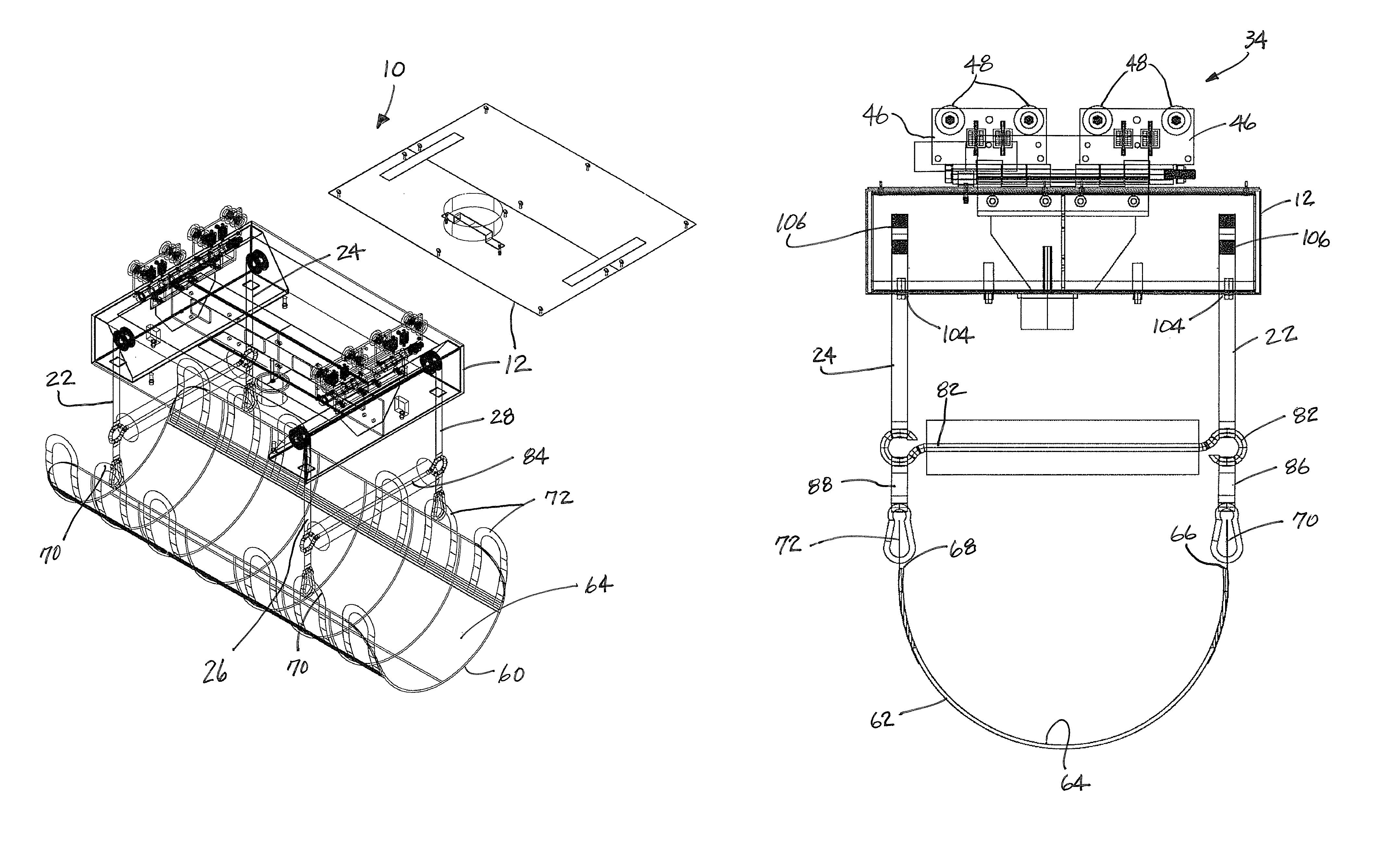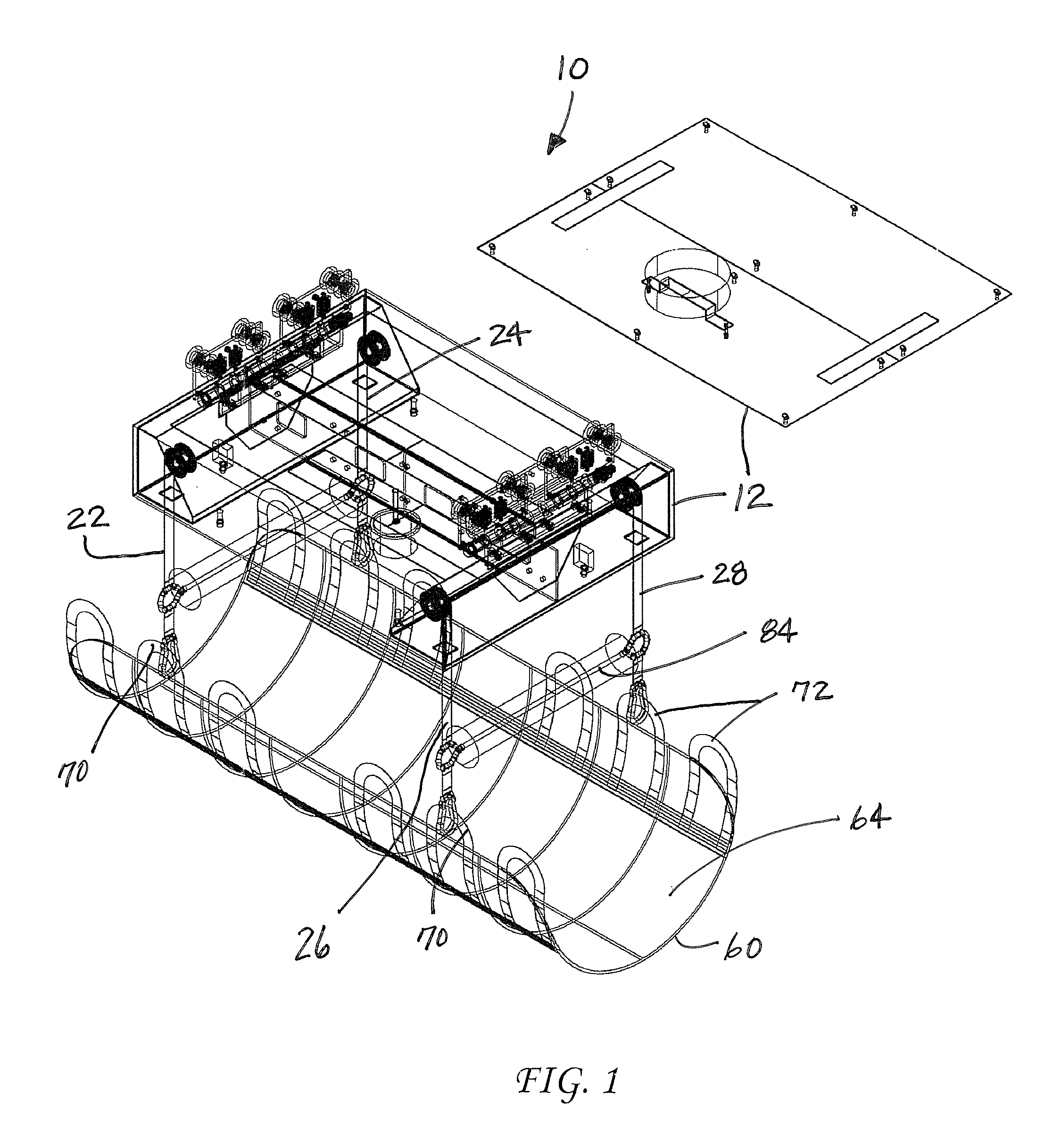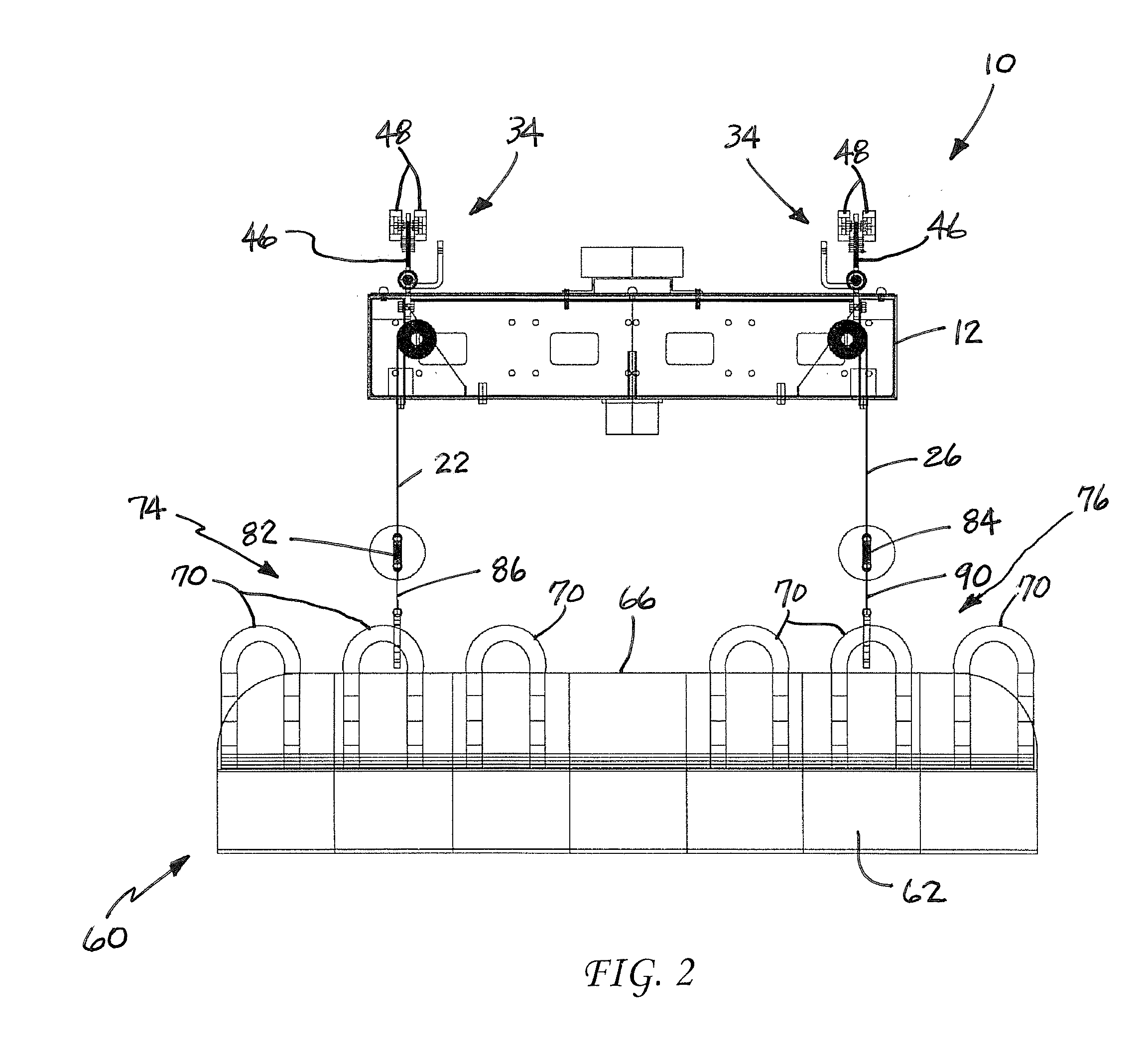Personal lifting device
a technology of lifting device and lifting pad, which is applied in the field of personal lifting device, can solve the problems of limiting the versatility and usefulness of the device, not being able to move the individual shoulder or leg of a patient, and not being able to adjust either side of the lift pad
- Summary
- Abstract
- Description
- Claims
- Application Information
AI Technical Summary
Benefits of technology
Problems solved by technology
Method used
Image
Examples
Embodiment Construction
[0026]Reference is now made to FIGS. 1-5 illustrating the personal lifting device 10 of the present invention. The lifting device 10 includes a housing 12 containing a first lifting mechanism 14, a second lifting mechanism 16, a third lifting mechanism 18 and a fourth lifting mechanism 20. More specifically, the first lifting mechanism 14 is carried on the housing 12 adjacent the first corner of the housing, the second lifting mechanism 16 is carried on the housing 12 adjacent the second corner of the housing, the third lifting mechanism 18 is carried on the housing 12 adjacent the third corner of the housing and the fourth lifting mechanism 20 is carried on the housing 12 adjacent the fourth corner of the housing. A first lift line 22 is connected to the first lifting mechanism 14. A second lift line 24 is connected to the second lifting mechanism 16. A third lift line 26 is connected to the third lifting mechanism 18. A fourth lift line 28 is connected to the fourth lifting mechan...
PUM
 Login to View More
Login to View More Abstract
Description
Claims
Application Information
 Login to View More
Login to View More - R&D
- Intellectual Property
- Life Sciences
- Materials
- Tech Scout
- Unparalleled Data Quality
- Higher Quality Content
- 60% Fewer Hallucinations
Browse by: Latest US Patents, China's latest patents, Technical Efficacy Thesaurus, Application Domain, Technology Topic, Popular Technical Reports.
© 2025 PatSnap. All rights reserved.Legal|Privacy policy|Modern Slavery Act Transparency Statement|Sitemap|About US| Contact US: help@patsnap.com



